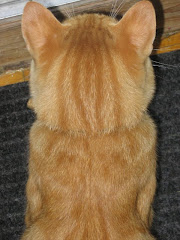Clean Money
short story inspired by a real life experience
by:
Füsun Atalay © 2000
Dedicated to BILL S
Antonio Giuseppe Franco Delverde was an inconspicuous little man for his long, impressive name. So, he called himself Tony, and the simple sign outside his little shop read Tony the Tailor. His height was at the lower end of the average scale for men, and his weight competed with his height particularly around the waist line. He had dark hair, a small moustache which he kept neatly trimmed, and a nice row of teeth which enhanced his generous smile every time the little bell on the shop door announced a new customer.
Tony was a cheerful man by nature, blessed by a mellifluous voice. He would hum familiar arias or whistle merry tunes as he picked up his needle and thread and set down to his much loved vocation of altering and tailoring garments for men.
He never knew the complete lyrics of anything he sang, but whatever he did sing sounded so joyous that one could listen to him without getting annoyed at the repetition of the limited number of verses he knew. Sometimes Tony even took familiar melodies and made up his own lyrics. To a non-speaker, much of what is uttered in Italian sounds romantic and mirthful anyway. He could be singing, "O, go away and leave me alone, why don’t you?"— but it was unimaginable to think he would when his voice and the impish smile under his toothbrush style moustache suggested very much the opposite.
Tony enjoyed the good reputation he had worked hard to earn. Whenever a young man in town had a career promotion and needed the attire to reflect his new position, he would visit Tony to tailor fashionable suit. Aspiring junior executives could surely pick suits off the racks in the department stores but if they wanted a perfect fit, choice of fabric, unparalleled attention to detail and meticulous workmanship, Tony was their man. He would not dream of compromising his art and his integrity which assured that he would always have faithful patrons, but also that he would never be rich enough to retire to a life of luxury, sailing around the world on a cruise liner.
Of course there were Gino and Carmela to think of as well as his devoted wife Magda, who managed the dry cleaning store. Gino wanted to become an engineer, move out of the small town in which he was born and grew up, and discover life in big cities such as New York or San Francisco. He was keen, industrious like his old man, bright and blessed with a sense of humor and adventure. With the right schooling he would go places Tony himself couldn’t even dream of. His greatest legacy to his son would be to provide him with choices and opportunities only a solid education could ensure.
Carmela, with her Hungarian complexion and Italian passion was the joy of Tony and Magda. Tony was proud that she had inherited her artistic talents from him. She had an instinctive eye for harmony and color coordination as well as a propensity for the whimsical and the unusual. His hopes for her included carving a prominent niche for her in the world of design and fashion. When Magda nudged him to the reality that such endeavors required funds they did not have, Tony would look up and reply as if he were addressing an invisible being.
"You never know, mia cara," he would say. "When there’s a will, there’s a way. The Almighty up there sees how hard we work for the things we want."
Thus Tony continued his dreams of a brilliant futures for his son and daughter and kept on working hard stretching his early mornings into late hours of devoted labor. He counted his blessings for for having a loving wife, good children and a talent that was in enough demand to put bread and butter on the table and afford a roof over their heads with a little left over to save for the future of his loved ones. But just the same, at times when he was overworked and his shoulders ached with the tension of his trade, he could not desist the temptation of daydreaming.
It was always the same dream: Somehow, he’d won the jackpot in the lottery. He’d lock up his little shop, go straight to the florist and buy the most expensive, most beautiful, largest floral arrangement. At this point he’d smile at the thought of disbelief on Magda’s face when he’s show up unannounced in the middle of the day at the Dainty Cleaners , almost lost behind a gigantic bouquet of flowers and foliage. Then they’s both drive home and plan the rest of their life and the future of their children with plenty of financial resources to afford what they wanted.
Tony was in the middle of such a daydream one day when the jingle of the bell over the shop door announced a customer. Tony laid the charcoal gabardine trousers he was hemming on his work table and went to the front to greet the newcomer.
The man who stood on the other side of the counter had not been in his shop before. He was a burly chap in his late twenties or early thirties. He looked straight at Tony with piercing gray eyes and planted a heap of garments on the counter top.
"I want these laundered and pressed. How long will it take?"
"This is a tailor shop," started Tony, "the cleaners is down the street on. . . "but the young man cut him off impatiently.
Look— I’m new in town and I don’t have much time. A tailor shop must at least have pressing?"
"Let’s see," Tony looked like a doctor with his tape measure hanging around his neck like a stethoscope and his half-moon lenses low on his nose. There were two jeans, a pair of brown corduroys and three polyester shirts.
"If you’re in a hurry I can take them to the Dainty Cleaners myself this afternoon and you can collect them here again the day after tomorrow."
"That’s fine," the man replied curtly. "I’ll come for them after four o’clock, Thursday."
"I’ll need your name and phone number," Tony picked up the pencil that he always kept lodged over his right ear.
The young man seemed to be a bit fidgety all of a sudden. "The name is Harvey. Lou Harvey. No phone number yet!"
Have you checked the pockets, Mr Harvey?" Tony looked up, but the man had already vanished in a rush.
Tony shook his head in the manner older people do at the haste and the rudeness that is prevalent among younger people. He tagged each item to deliver them to the cleaners before he could return to the task that was interrupted by the strange customer.
The dry cleaners where Magda worked during the mornings was less than a ten minute walk away. She would be leaving in half an hour, and maybe he could take her out for a cappuccino before she went home to cook supper and he returned to the tailor shop. He locked up the shop door with the sign indicating he’d be back in an hour.
Magda was surprised to see him show up at the cleaners with a pile of clothes on his arm. As she took them from him, he explained the circumstances which brought him there. Whatever the reason, Magda thought it was a nice idea, impromptu as it was, to go for a leisurely coffee at midday with her Tony.
She stuffed the garments in her canvas bag to wash at home. (She had been doing that for the past week and bringing them back for pressing since the industrial washer had been taken out of the cleaning store for major repairs.) Then in the faltering autumn sunshine, the two of them sauntered, arm in arm to Café Ferento for their favorite brew.
She stuffed the garments in her canvas bag to wash at home. (She had been doing that for the past week and bringing them back for pressing since the industrial washer had been taken out of the cleaning store for major repairs.) Then in the faltering autumn sunshine, the two of them sauntered, arm in arm to Café Ferento for their favorite brew.
That evening when Tony closed up shop and went home just in time for their evening meal, Magda seemed to have a strange look about her. She asked him to wait until dinner was over and the two of them had some time alone after Gino and Carmela left to meet their friends at the movies. Now Tony was even more curious about her unusual secrecy.
Finally he was alone with is wife.
"What;’s up Magda? What’s the big secret?" He tried to make light of her serious appearance.
Magda seemed impatient to tell him whatever it was and get it off her chest.
You won’t believe it Tony, but I laundered twenty thousand dollars today !"
"What? Where did you get that kind of money? What d’ya mean you laundered it?" Tony was befuddled.
Magda went on to tell him how she noticed a bulge in one of the pants after it came out of the wash. She had presumed that the pockets were cleared when the garments were brought, so she didn’t check them herself. When she investigated, she found a worn out billfold in the back pocket of the brown corduroys .
She was so surprised at first, she did not know what to do with it. Then she decided to check if the contents were damaged. That’s when she found the folded thousand dollar bills— all twenty of them— in the wallet. There was nothing else- no driver’s licence, credit cards, anything to identify the owner. She had taken out the bills, which were all damp but clean, and laid them out to dry on the floor in their bedroom before placing them back in the wallet.
Tony was puzzled. He couldn’t make any sense of this either. But when he recalled the odd manner in which the man who brought the corduroys behaved, he began feeling uneasy. Who would keep so much money in his pocket and let it go so casually? Either he was hiding it from someone or he was truly absent minded ! Was he aware of missing his cash by now? Did he remember that he might have left them in the cords he gave for washing and pressing?
"The way I see it," started Tony after pondering a little on what he heard, "we have two choices.
One— we can place the money back where it came from and return his clothes to this Lou character on Thursday.."
"What’s the other choice?" Magda looked so sweet when she had that girlish curiosity on her face.
Tony chuckled. "The other is not really a choice, but it is a possibility. If we were not honest, we could keep the money and pretend we knew nothing about it I mean if it was so important how could anyone just leave it in his pocket?"
"Oh, Tony, you can’t mean that!" exclaimed Magda in earnest.
"Of course I don’t mean that, mia cara. I just like teasing you."
Yet how nice it would be if they had received a windfall like that just out of the blue ! It would not set them up for life, but perhaps they could afford a cruise after all and forget about their hard work for a couple of weeks. Or, they could pay off the remaining mortgage on their home and then have a couple of thousand left over for a frivolous shopping spree. The thought seemed to be mutually shared by both but neither dared to voice it to the other. Yet Tony could read the wistful expression in Magda’s blue eyes; and Magda knew what Tony’s involuntary deep sigh meant.
Next morning all the bills were dry and ready to be placed back in the wallet. Tony thought it would be best to keep the wallet locked up at home until Thursday when Lou Harvey said he’d come to pick up his clothes at the tailor shop. He was still unsure whether he should point out that the latter had left his wallet in his pants. There was something strange about this incident and the Lou character but Tony just could not put his finger on it.
On Thursday Tony closed his shop for lunch, made a special trip home and brought back the wallet. He picked up Lou Harvey’s garments from the dry cleaners - all washed and neatly pressed. As the clock on the wall ticked away, the small hand moving closer to four and the long one to twelve, Tony’s anxiety filled his chest. Had it not been for the inordinate amount of cash casually left in a pocket, he wouldn’t have thought much of Lou Harvey’s behavior. In the two dat time lapse however, Tony’s vivid imagination had presented him with so many scenarios and ‘what-if’s’ . Then reflecting back on the young man’s hurried manners and shifty eyes, little by little the honest tailor started losing his composure.
It was four-thirty-five but there was no sign of Lou. Tony finished sewing the last button on a jacket he had tailored. The suit was completed. It was very stylish and once again Tony fely proud of his work. There was no use starting something new now. It was five twenty and he wanted to close his shop soon. If it were not for Lou Harvey, Tony would have called it a day a quarter of an hour ago.
At six o’clock Tony phoned home to tell Magda that he was just leaving his shop so she wouldn’t worry. That’s all he could do for Lou Harvey— after all, he had a life and a family. Some people were so inconsiderate ! The Tony thought of the wallet and decide not to leave it in the shop overnight. He had to take it back home with him.
Magda was awaiting his return anxiously to hear what happened. She could not believe her eyes when Tony showed her the wallet.
An entire week had gone by and there was no sign of Lou Harvey. Every day Tony had taken the wallet full of twenty thousand dollars in cash and waited for its owner to show up. He was beginning to feel distraught with the burden of this money like the ancient mariner must have felt with the albatross hanging around his neck. There was no way of finding out where this man lived to get in touch with him.
After four torturous weeks of waiting without any results Tony declared to Magda that they had but only two options left.
"Didn’t we have two choices when this thing started?" asked puzzled Magda.
"Well, one of the choices is still the same, but we know we cannot keep this cash—it’s not ours.
Which brings us to the second option," Tony paused to see if Magda had caught on. She waited for him to continue.
You agree that it is the only other thing to do, don’t you, mia cara? The police will know what to do with it. Keeping it may bring us trouble we don’t need."
Once again he thought he saw that wistful look in Magda’s eyes. How good she would look stretched out on a chaise-long on the upper deck of a luxury liner, soaking in the sun and the sea breeze. A brief picture of them dancing cheek-to-cheek in the lounge after the sumptuous eight course meal flashed before his eyes. Then followed a snapshot of the sign on his shop window:
"Closed for two weeks - VACATION".
She thought she heard the familiar involuntary sigh she had heard when she first told him about laundering thousands of dollars.
Tony was right, but just the mention of police and trouble raised the blonde hairs on the back of Magda’s neck. The sooner they settled this, the better life would be. Sleeping with thousands of dollars under their pillows just wasn’t novel any more.
At the police station Tony recounted in the smallest detail hoe he came upon such a sum of money. Before he turned the wallet to the authorities, he read the written transcription of his statement and seeing that there was nothing else that he could add, he signed it.
When he stepped outside, he was met by a cool November drizzle. Faded orange and crimson leaves were swept to the trenches in the sidewalk and glistened with raindrops in spite of their parched skins. Tony put up the collar of his coat, hunched his shoulders forward and started walking towards his shop. He felt the lightness of a weight taken off his shoulders and his mind. It was still a mystery to him why Lou never returned to claim his garments or his money— but then, Lou was probably not even his real name. In any case, Tony hoped that was the end of this strange adventure and acknowledged to himself that both he and Magda had learned some lessons besides courting and resisting temptation.
It was Carmela who answered the phone and covering the receiver with her other hand she shouted, "Pa, it’s for you! Someone - a sergeant Conrad in the fifth prison?" Tony took the receiver. It was sergeant Conrad Barrymore from the Fifth Precinct. He wanted to know if Tony could drop by the police station tomorrow morning at nine.
Tony's heart started palpitating. It had been almost three weeks since he had turned in the money and signed his statement. Why would they want him to go back? Was he found guilty of something? Sergeant Barrymore assured that everything would be explained to him when he went to the station.
The sky was already turning dark at four o’clock . Magda found November days so dreary. She stopped pacing nervously when from the corner of her eye she saw Tony’s silhouette at the entrance. She ran to open the door, but he had already turned his key in the lock.
So?" Magda was dying of curiosity and anxiety.
Tony took off his trench coat and the brown woollen scarf Magda had knitted for him. He hung both on a wooden hanger; placed the hanger in the coat closet and turned around to his wife. Magda looked as if she were about to faint with anxiety.
"Well, I’m not going to jail," said Tony calmly. His face was beaming.
"Tony, what happened, tell me for heaven’s sake!" Magda begged. "I have been climbing the roof wondering why the police called you back— what did they want?"
"Ah mia cara, my darling.." Tony grabbed Magda by her waist and turned her around in a waltz step.
"Get ready to go out for Christmas shopping. We still have three hours before stores close."
"Antonio Delverde, stop kidding around with me and get to the truth !"
The truth was that Lou Harvey was a counterfeit money printer. His real name was Louis Desrosiers. He had no idea where the batch of twenty -one thousand dollar bills had disappeared , so he printed a set with the same phony serial numbers. The police had established that the money turned in by Tony was indeed counterfeit, but they were waiting to find the culprit behind the operation.
Louis Desrosiers was apprehended when he tried to pay cash for a fancy sound system he purchased on Saturday morning. After being detained all day, he finally confessed and that is why the police called Tony that evening to go the next day to identify Desrosiers in a line up of suspects.
"Oh, thank you, God !" exclaimed Magda. "I was so scared that they thought you were involved in a crime or something." Then, as an afterthought she added, "Can you imagine, Tony, if we hadn’t turned it in and started spending the money ourselves?"
By this time Gino and Carmela, in their benign curiosity, had surrounded them.
"Well my darlings, honesty always pays off— and in more ways than one." Tony reached into the breast pocket of his sharply tailored vest and took out an envelope. "Because we helped the police to catch the culprit and stop him from printing more fake money, we get the reward that was set for this. Look— Two thousand, crispy clean, unlaundered dollars !"
There was a joyful cheer from all three. Carmela and her brother applauded as Tony lifted his wife off her feet in a tight embrace. Then they all decided to go out to celebrate, and over a candle-lit dinner discuss what they would do with their reward..
All rights reserved ~ Copyright by Füsun Atalay - January 24, 2000 ©

















































